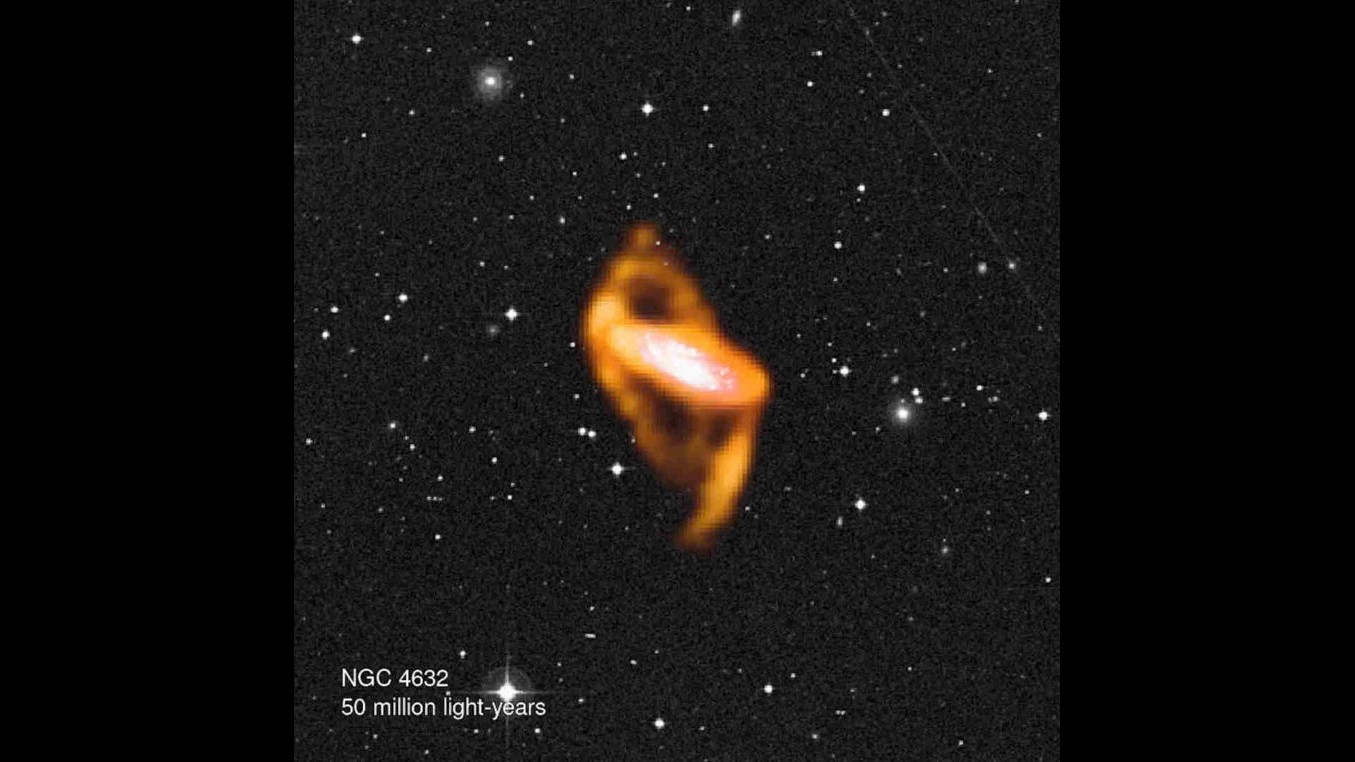
[ad_1]

The first 3D map of hundreds of galaxies in the local universe is poised to increase our understanding of nearby galaxies and galactic clusters, showing how they form and change over time.
Covering three-quarters of the sky, the map should help scientists measure the distribution of gas and dark matter in the local universe, as well as gain a much-improved understanding of the processes involved in galaxy formation and evolution and the role black holes play in this galactic development.
The map was made possible by the Widefield ASKAP L-band Legacy All-sky Blind Survey (WALLABY), using data from the Australian Square Kilometre Array Pathfinder (ASKAP) radio telescope in the Australian Outback.
Related: New 3D cosmic map reveals 1 million previously hidden galaxies
During its first phase, WALLABY has covered 180 square degrees of the night sky, an area equivalent in size to 700 full moons, and surveyed over 600 galaxies.
This is just a drop in the cosmic ocean compared with the quarter of a million galaxies WALLABY is estimated to catalog over its mission. These observations will form a detailed intergalactic map prompting an investigation that could not be conducted on a similar scale using optical telescopes alone.
“If our own Milky Way is between us and the galaxy we’re trying to observe, the sheer number of stars and dust makes it incredibly hard to see anything else,” Tobias Westmeier, a radio astronomer at the University of Western Australia node of the International Centre for Radio Astronomy Research (ICRAR), said in a statement. “WALLABY isn’t affected by these limitations. It’s one of the great strengths of radio surveys; they can simply peer through all the stars and dust in our own Milky Way.”
The ASKAP radio telescope conducting WALLABY operates eight hours a day in an extremely radio-quiet zone in Western Australia’s remote Mid West region, which allows WALLABY to find narrow and faint astronomical signals without being swamped by radio interference.
WALLABY represents the first full 3D galactic survey conducted on this scale, and this first data release consists of over 30 terabytes of data from each eight-hour operational day.
The advantage of a 3D map is that it can better show astronomers where galaxies are in relation to one another, splitting apart galaxies that may appear close together but that are actually separated in another dimension by millions of light-years.
“WALLABY will enable us to directly map and detect hydrogen gas, the fuel for star formation,” study co-author Karen Lee-Waddell, director of the Australian SKA Regional Centre and a WALLABY project scientist, said in the statement. “With this data, astronomers can accurately group galaxies to better understand how they affect each other when clustered together, providing insight on how galaxies form and change over time.”
The sheer scale of the WALLABY catalog is expected to lead to a wealth of new observations and discoveries, with its first release already revealing many galaxies never seen before in radio waves.
“Of the over 600 galaxies measured so far, many have not been previously cataloged at any other waveband and are considered new discoveries,” Lister Staveley-Smith, WALLABY’s principal investigator and co-author of the research, said in the statement. “Over a dozen papers have been published so far describing new discoveries from these early observations.”
The newly released WALLABY research is featured in two papers, both published Nov. 15 in the journal Publications of the Astronomical Society of Australia.
Follow us on Twitter @Spacedotcom or on Facebook.
[ad_2]